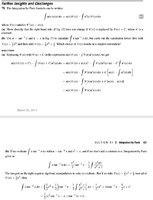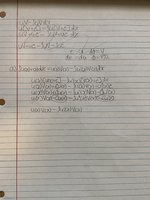Integrate
Junior Member
- Joined
- May 17, 2018
- Messages
- 107
I am trying to teach myself calculus and have been going through problems and this one is just too high minded for me.
View attachment 19770
First off its just confusing that they use Two v's.
When I do part a it just amount to some simple canceling with the C's
but with part b I just don't know how big V plays a part.
What is the point of the exercise?
View attachment 19770
First off its just confusing that they use Two v's.
When I do part a it just amount to some simple canceling with the C's
but with part b I just don't know how big V plays a part.
What is the point of the exercise?


